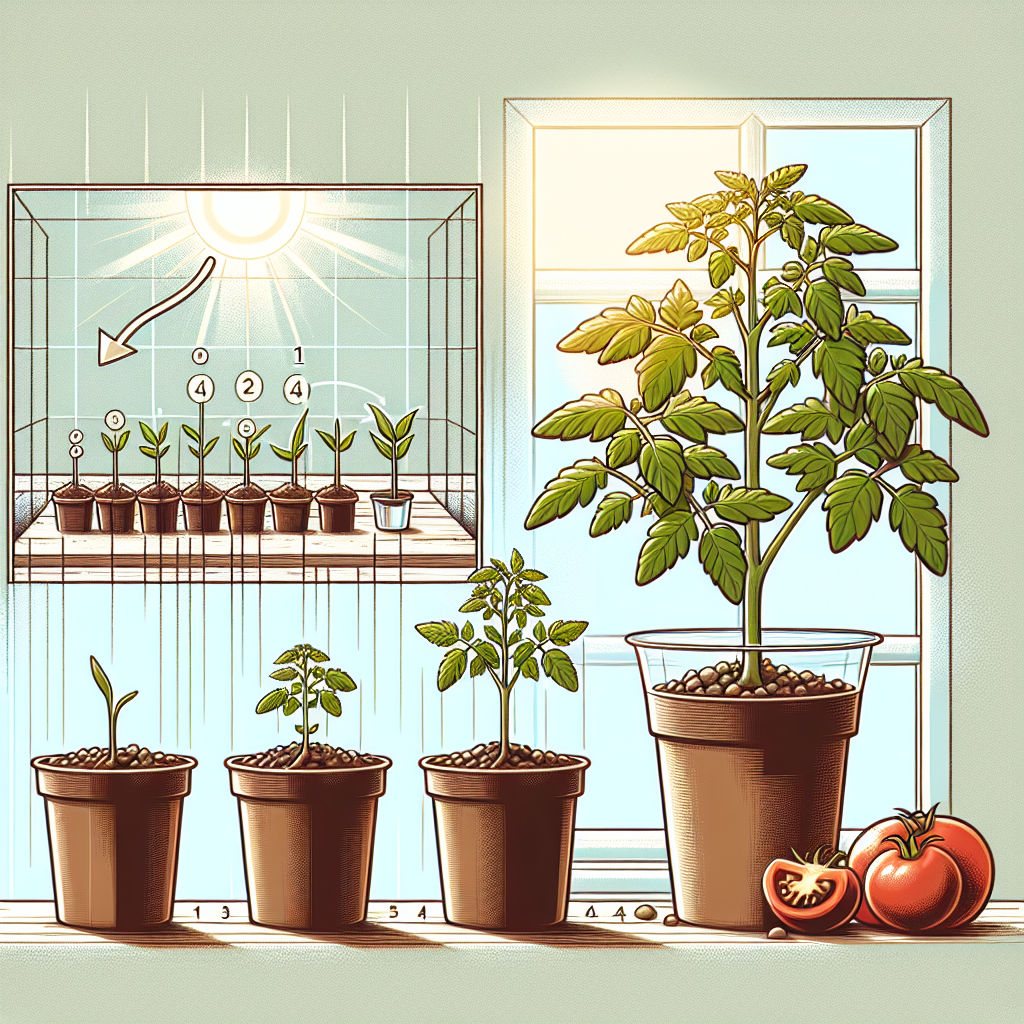
How early can you start tomatoes indoors
An Ultimate Guide to Starting Tomatoes Indoors: Timing and Tips
Growing tomatoes is a rewarding endeavor that many gardeners look forward to each year. With their vibrant colors and rich flavors, tomatoes can transform a simple dish into something extraordinary. If you're considering growing these fruits, you might be wondering, how early can you start tomatoes indoors? This article will dive into the best practices for starting tomatoes indoors, timing, and essential care tips to help you cultivate a bountiful garden.
Understanding the Tomato Lifecycle
Before we delve into how early you can start tomatoes indoors, it’s essential to understand the lifecycle of this popular plant. Tomatoes are typically classified as annuals, meaning they complete their lifecycle within a single growing season. Here's a brief overview of their lifecycle:
- Germination: The process begins with seed germination, which occurs when the seeds absorb moisture and begin to sprout.
- Seedling Stage: After germination, the seedlings emerge, and they require specific amounts of light and nutrients to grow strong.
- Vegetative Stage: The plants will develop leaves and stems, crucial for photosynthesis and nutrient absorption.
- Flowering Stage: Once the plants are mature, they begin to bloom, producing flowers that will eventually turn into tomatoes.
- Fruiting Stage: Finally, the pollinated flowers develop into fruit, and it’s time for harvest.
Optimal Timing for Starting Tomatoes Indoors
So, how early can you start tomatoes indoors? The general rule of thumb is to start your tomato seeds indoors about 6 to 8 weeks before the last expected frost date in your area. This timing allows you to establish healthy seedlings, ready for transplanting onto your garden or in pots outdoors. Here’s a more detailed approach to timing:
- Determine your local frost dates. This is crucial for knowing when to start your seeds indoors. You can find frost dates through local gardening resources or online databases.
- Count backward 6-8 weeks from the last frost date to find your ideal seed starting date.
- Remember to plant a bit earlier if you're growing larger varieties of tomatoes, as they may need extra time to grow robustly before being transplanted.
Choosing the Right Varieties
The variety of tomatoes you choose can also influence when to start them indoors. Some types mature faster than others, allowing for flexibility in your planting schedule. Here are a few common tomato varieties and their typical days to maturity:
| Tomato Variety | Days to Maturity |
|---|---|
| Cherry Tomatoes | 55-70 days |
| Roma Tomatoes | 70-80 days |
| Beefsteak Tomatoes | 80-100 days |
| Heirloom Tomatoes | 70-90 days |
Choosing early-maturing varieties can be an advantage, especially in regions with shorter growing seasons.
Preparing to Start Indoor Tomatoes
Now that you know when to start your tomatoes, it’s time to prepare for successful indoor planting. Here are key steps to ensure your seedlings thrive:
- Gather Materials: You'll need seed trays or pots, seed starting mix, water, and obviously, your tomato seeds.
- Choose the Right Location: Find a warm spot in your home with plenty of light. A south-facing window or under grow lights is ideal.
- Soil Preparation: Use a high-quality seed starting mix that retains moisture but drains well.
Sowing the Seeds
Once you have everything ready, you can start sowing your seeds:
- Fill your seed trays with the moistened seed starting mix.
- Plant your seeds about 1/4 inch deep and cover them gently with soil.
- Water the trays carefully, ensuring not to wash away the seeds.
- Label your trays or pots with the date and variety to keep track of what you're growing.
Care and Maintenance of Indoor Seedlings
As your tomato seeds germinate and sprout, proper care is essential for ensuring strong, healthy plants.
Lighting Needs
Tomato seedlings require a lot of light—around 12-16 hours of daylight. If you don’t have sufficient natural light, consider using grow lights to supplement:
- Position grow lights 2-4 inches above the seedlings.
- Adjust the height as the seedlings grow to prevent stretching.
Watering Practices
Keeping the soil moist but not waterlogged is crucial. Here’s how to manage watering effectively:
- Water from the bottom by placing trays in water for a few minutes until the topsoil is moist.
- Check the moisture levels regularly to ensure the seedlings are not too dry or overly wet.
Feeding Your Seedlings
Starting at around 2-3 weeks after germination, you can start feeding your seedlings with a diluted liquid fertilizer. Opt for a balanced fertilizer or a fertilizer high in phosphorus to promote root development.
Transplanting Seedlings Outdoors
Once the risk of frost has passed and your seedlings are around 6-8 inches tall, they are ready for transplanting outside. Follow these steps for a successful transition:
- Harden Off: Gradually acclimate your seedlings to outdoor conditions by exposing them to sunlight and outdoor temperatures for a week or two.
- Choose a Suitable Location: Ensure you plant them in a sunny spot with well-draining soil.
- Space Properly: Depending on the variety, space your tomato plants 18-24 inches apart to allow for airflow and growth.
Conclusion
When considering how early can you start tomatoes indoors, remember that timing is crucial for a successful gardening experience. Starting your seeds indoors 6-8 weeks before the last frost date, selecting the right varieties, and providing adequate care will help you grow lush, productive tomato plants. With a little patience and care, you’ll be on your way to enjoying homegrown tomatoes that elevate your meals and satisfy your gardening spirit!
By Guest, Published on October 8th, 2024